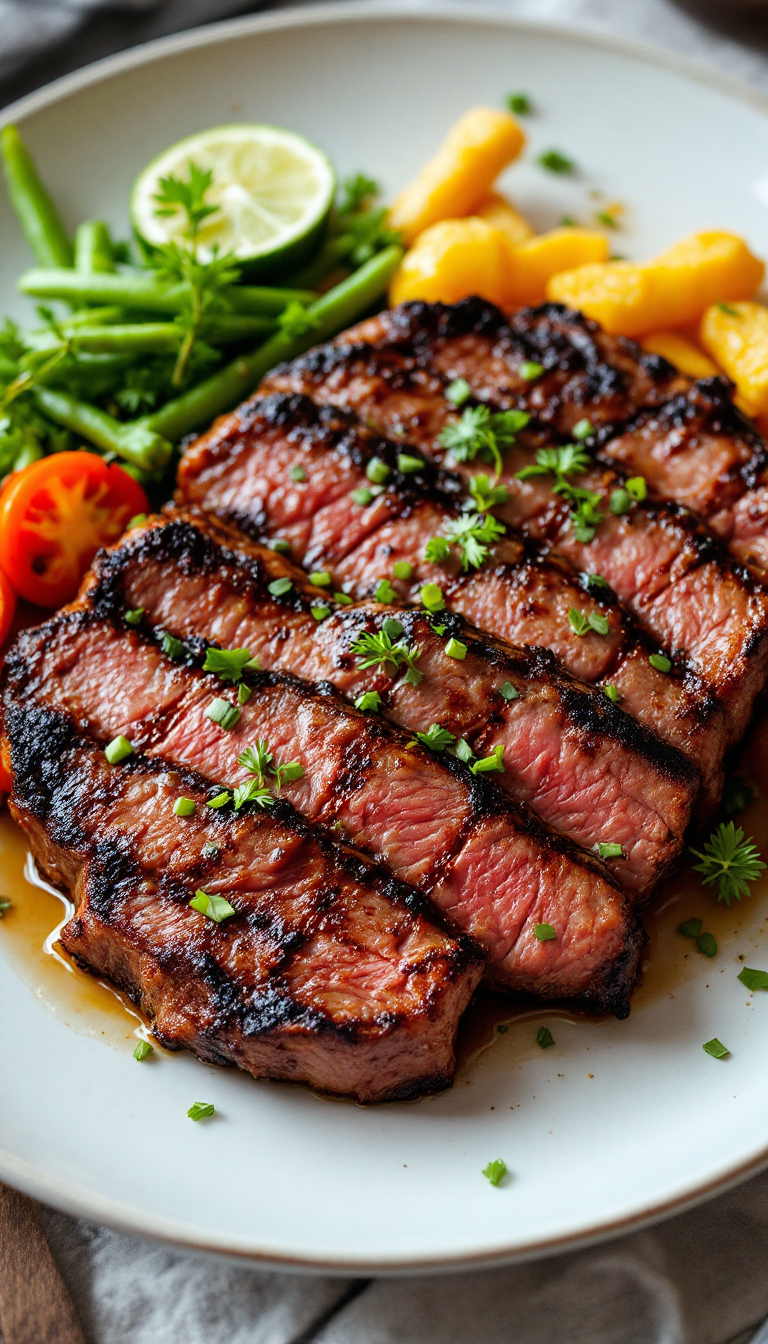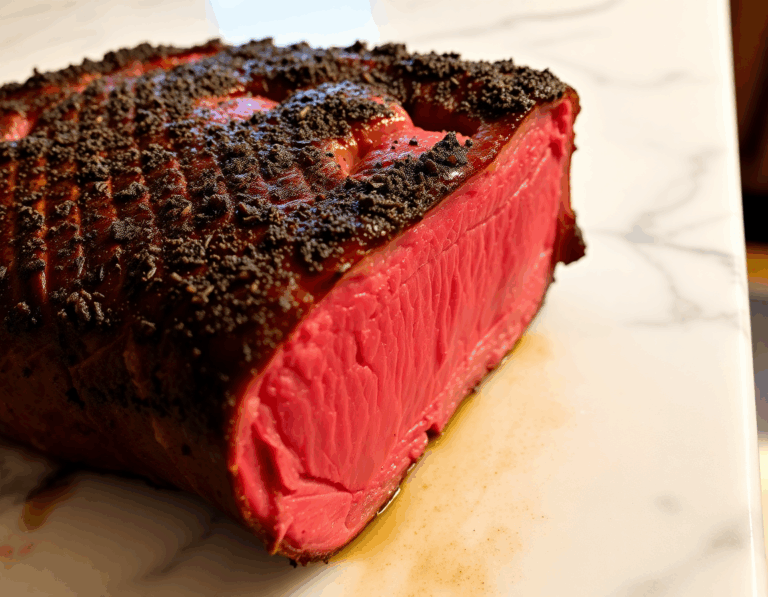
Craving a dinner that’s a real meat lover’s dream? These carnivore diet ideas are like a symphony for your taste buds—rich, hearty, and unapologetically meaty. Picture this: sizzling steaks, juicy burgers, and, oh, the surprise twist of bacon-wrapped delights that will make you question why you’d ever eat anything else.
Steps
- Begin your day with a carnivore-friendly breakfast by preparing dishes such as canned fish recipes, breakfast meatza, ham and egg cups, or a steak fajita frittata without the veggies. You can also try keto eggs benedict for a savory start.
- For lunch, explore options like keto chili without beans, grilled buffalo chicken breast, Dijon mustard salmon, or air fryer steak bites. You might also enjoy BBQ shrimp for a flavorful midday meal.
- Dinner can include hearty choices like pork tenderloin, slow-roasted chicken, or prime rib. Consider making keto pulled pork or reverse-seared steak with mayo for a satisfying evening dish.
- As you plan your meals, stock up on essentials such as various cuts of meat, including steaks, ground beef, and organ meats. Don’t forget to include fish or seafood like salmon, sardines, and shrimp in your grocery list.
- Incorporate other carnivore-friendly items like eggs, full-fat dairy products, and bone broth. Enhance flavors with spices such as oregano and cumin, along with keto-friendly condiments and cooking oils like avocado oil.
- To add variety, consider using animal fats like tallow or lard, and if you’re not strictly carnivore, you might include some avocado or olives. Always prioritize high-quality, pasture-raised, and wild-caught options when available.

Ingredients
- Sugar-free bacon
- Sausages (pork, chicken, or turkey)
- Pork chops, roasts, and belly
- Lamb
- Porterhouse steak
- Ribeye steak
- Top side steak
- Filet steak
- T-bone steak
- Flank steak
- Ground beef
- Organ meats: liver, kidney, heart, tongue, sweetbreads
- Bone marrow
- Turkey
- Chicken
- Salmon
- Trout
- Sardines (fresh or canned)
- Mackerel
- Shrimp
- Oysters
- Lobster
- Mussels
- Canned fish (e.g., tuna, anchovies)
- Cod liver
- Eggs
- Milk
- Cheese
- Yogurt
- Bone broth
- Spices: oregano, pepper, salt, cumin
- Keto-friendly condiments
- Cooking oils (e.g., avocado oil)
- Animal fats: tallow, lard, chicken, or duck fat
- Coconut oil
- Butter or ghee
- Optional (for less strict carnivores): avocado, olives
FAQ
- What foods are included in the carnivore diet?
- The carnivore diet primarily consists of meat, focusing on grass-fed and pasture-raised options, along with wild-caught seafood. Participants often consume “nose-to-tail” cuts, which include organ meats, bone marrow, and other parts of the animal. Some variations of the diet also allow eggs, full-fat dairy products, herbs, spices, and non-starchy vegetables.
- How does the carnivore diet differ from the keto diet?
- While both diets are low in carbohydrates, the keto diet is less restrictive as it permits vegetables and plant-based fats, unlike the carnivore diet, which focuses strictly on animal products. However, many keto-friendly recipes can be adapted for a carnivore meal plan.
- Is coffee allowed on the carnivore diet?
- In its strictest form, the carnivore diet does not allow coffee or any plant-based beverages. However, some followers of the diet choose to include small amounts of coffee and tea.
- Can you provide examples of meals on the carnivore diet?
- Yes, for breakfast, you might have ham and egg cups or steak fajita frittata without the veggies. Lunch could include grilled buffalo chicken breast or Dijon mustard salmon, while dinner options might feature slow-roasted chicken or reverse-seared steak with mayo.
- What are some pantry essentials for the carnivore diet?
- Essential pantry items include spices like oregano, pepper, and salt, as well as keto-friendly condiments and cooking oils such as avocado oil. Additionally, animal fats like tallow and lard are commonly used.
Tips
- Gradual Coffee Reduction: If you’re considering giving up coffee as part of your carnivore diet, try reducing your intake gradually over a month instead of stopping abruptly. This can help ease the transition and mitigate withdrawal symptoms.
- Embrace Nose-to-Tail Eating: Incorporate a variety of meat cuts, including organ meats and other often-overlooked parts of the animal, to ensure you’re getting a wide range of nutrients and flavors.
- Choose High-Quality Meats: Opt for grass-fed, pasture-raised meats and wild-caught seafood whenever possible to adhere to the principles of the carnivore diet and potentially benefit from higher nutrient content.
- Experiment with Keto-Friendly Condiments: Enhance your meals with keto-friendly condiments and spices to keep your dishes flavorful without adding unnecessary carbs.
Equipment
- Air Fryer – For making Air Fryer Steak Bites.
- Slow Cooker or Dutch Oven – For making Slow-Roasted Chicken and Keto Pulled Pork.
- Meat Thermometer – To ensure meats like Prime Rib and Reverse-Seared Steak are cooked to the desired temperature.
- Grill or Grill Pan – For Grilled Buffalo Chicken Breast and other grilled recipes.
- High-Quality Knives – For preparing and cutting various meats, including organ meats.
- Fish Descaler – If you opt for fresh fish like sardines or mackerel.
- Bone Marrow Spoon – If you plan to include bone marrow in your meals.
- Avocado Oil – As a recommended cooking oil for this diet.
